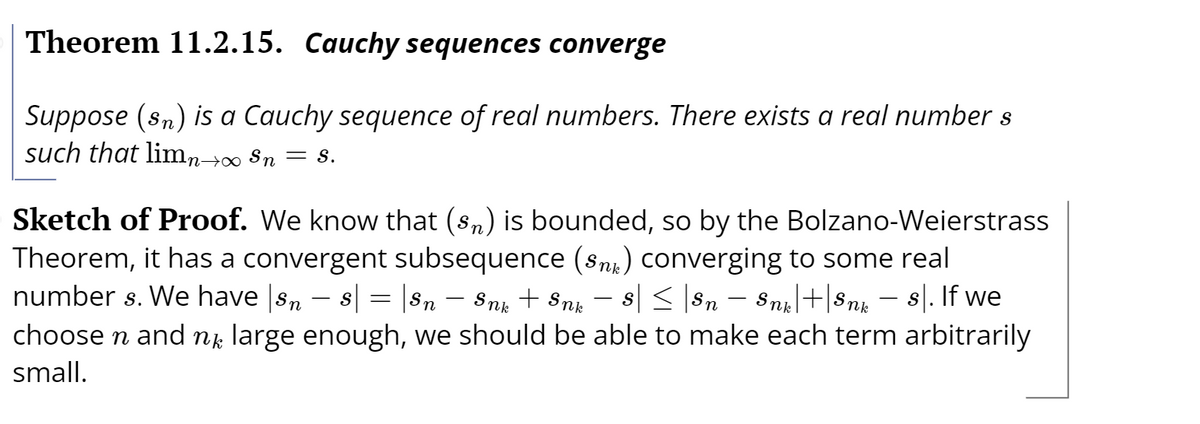Problem 11.2.22. The nth Term Test Show that if an converges then lim an = 0. %3D n→∞
Problem 11.2.22. The nth Term Test Show that if an converges then lim an = 0. %3D n→∞
Algebra & Trigonometry with Analytic Geometry
13th Edition
ISBN:9781133382119
Author:Swokowski
Publisher:Swokowski
Chapter10: Sequences, Series, And Probability
Section: Chapter Questions
Problem 63RE
Related questions
Question
100%
thank you so much.

Transcribed Image Text:Theorem 11.2.15. Cauchy sequences converge
Suppose (sn) is a Cauchy sequence of real numbers. There exists a real number s
such that limn→∞ Sn = s.
Sketch of Proof. We know that (sn) is bounded, so by the Bolzano-Weierstrass
Theorem, it has a convergent subsequence (Snk) converging to some real
number s. We have sn – s = |Sn – Snp + Snk
s| < |Sn – Sni|+|Snk
8|. If we
choose n and ng large enough, we should be able to make each term arbitrarily
small.

Transcribed Image Text:Problem 11.2.22. The th Term Test
Show that if an converges then lim an = 0.
= 0.
in=1
Expert Solution
This question has been solved!
Explore an expertly crafted, step-by-step solution for a thorough understanding of key concepts.
Step by step
Solved in 3 steps with 2 images

Recommended textbooks for you

Algebra & Trigonometry with Analytic Geometry
Algebra
ISBN:
9781133382119
Author:
Swokowski
Publisher:
Cengage

Algebra & Trigonometry with Analytic Geometry
Algebra
ISBN:
9781133382119
Author:
Swokowski
Publisher:
Cengage